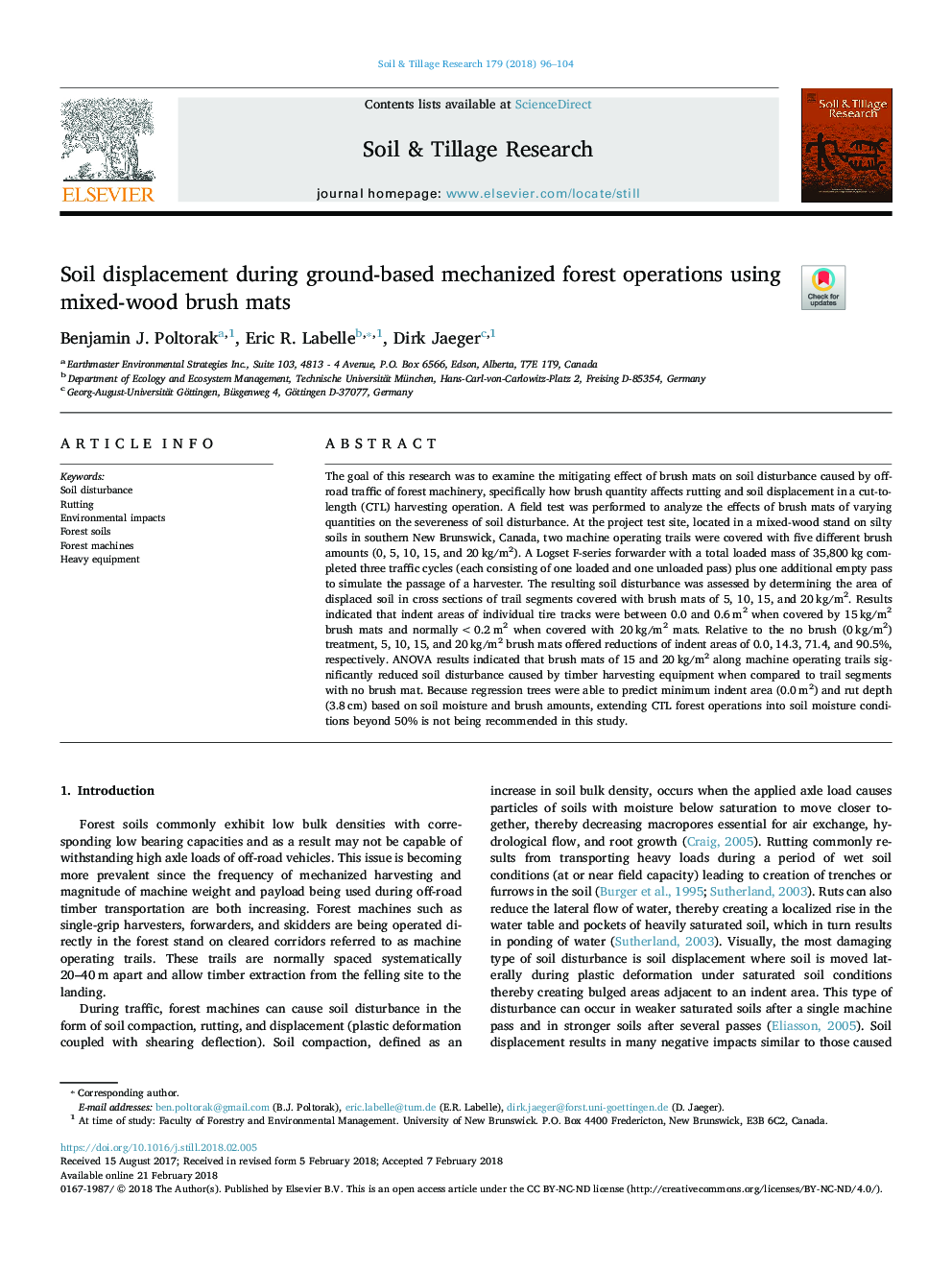| Article ID | Journal | Published Year | Pages | File Type |
|---|---|---|---|---|
| 6773110 | Soil and Tillage Research | 2018 | 9 Pages |
Abstract
The goal of this research was to examine the mitigating effect of brush mats on soil disturbance caused by off-road traffic of forest machinery, specifically how brush quantity affects rutting and soil displacement in a cut-to-length (CTL) harvesting operation. A field test was performed to analyze the effects of brush mats of varying quantities on the severeness of soil disturbance. At the project test site, located in a mixed-wood stand on silty soils in southern New Brunswick, Canada, two machine operating trails were covered with five different brush amounts (0, 5, 10, 15, and 20â¯kg/m2). A Logset F-series forwarder with a total loaded mass of 35,800â¯kg completed three traffic cycles (each consisting of one loaded and one unloaded pass) plus one additional empty pass to simulate the passage of a harvester. The resulting soil disturbance was assessed by determining the area of displaced soil in cross sections of trail segments covered with brush mats of 5, 10, 15, and 20â¯kg/m2. Results indicated that indent areas of individual tire tracks were between 0.0 and 0.6â¯m2 when covered by 15â¯kg/m2 brush mats and normally <0.2â¯m2 when covered with 20â¯kg/m2 mats. Relative to the no brush (0â¯kg/m2) treatment, 5, 10, 15, and 20â¯kg/m2 brush mats offered reductions of indent areas of 0.0, 14.3, 71.4, and 90.5%, respectively. ANOVA results indicated that brush mats of 15 and 20â¯kg/m2 along machine operating trails significantly reduced soil disturbance caused by timber harvesting equipment when compared to trail segments with no brush mat. Because regression trees were able to predict minimum indent area (0.0â¯m2) and rut depth (3.8â¯cm) based on soil moisture and brush amounts, extending CTL forest operations into soil moisture conditions beyond 50% is not being recommended in this study.
Related Topics
Physical Sciences and Engineering
Energy
Renewable Energy, Sustainability and the Environment
Authors
Benjamin J. Poltorak, Eric R. Labelle, Dirk Jaeger,
